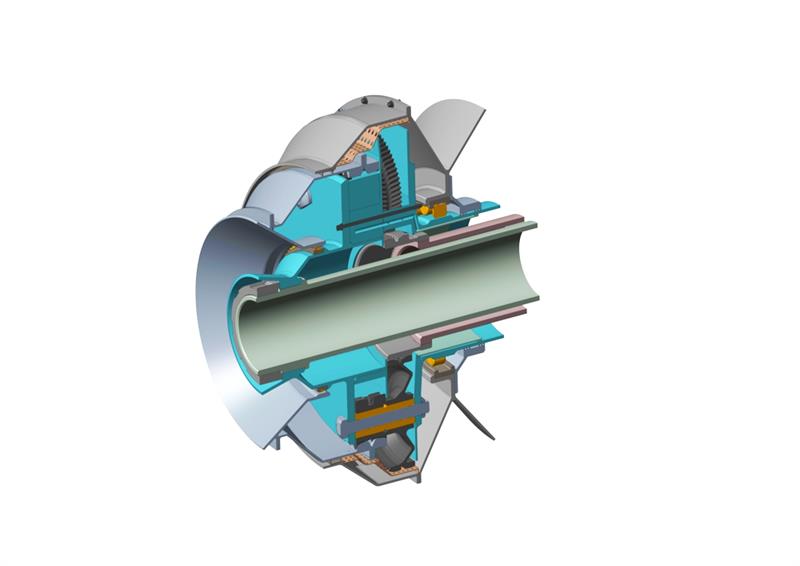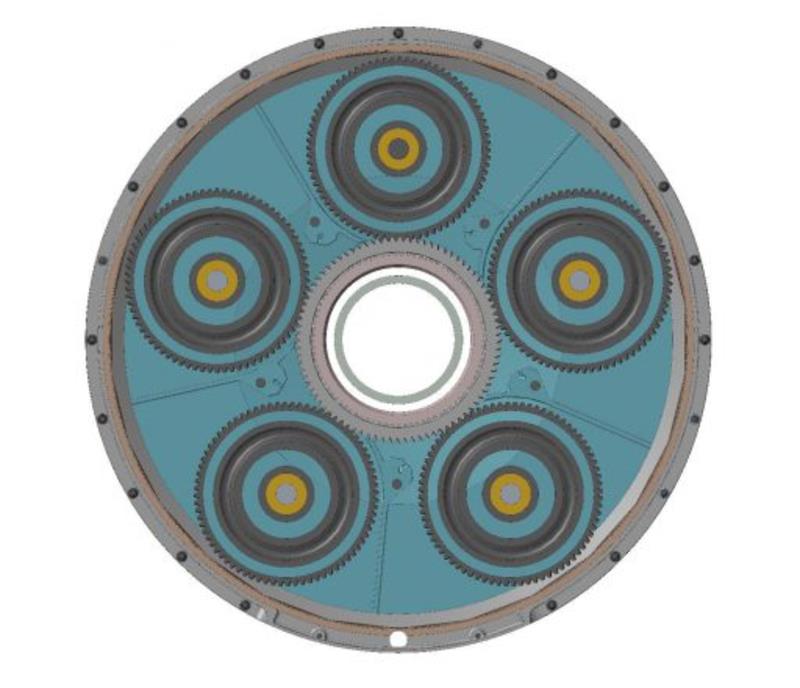UK-based aerospace technology company Derwent Aviation has developed an aero engine architecture which, it claims, will halve nitrogen oxide (NOx) emissions and deliver significant benefits in cost of ownership. Derwent also says it lends itself to the further electrification of commercial aeroplanes and could be available to operators by 2025.
The ‘Dual Drive Booster’ (DDB) is currently being developed by industry performance analysis experts as well as university research centres in the UK and Germany.
Charles Cuddington, Derwent’s chief executive and former managing director of Rolls-Royce’s civil engines business, says the DDB concept can deliver major benefits to a variety of applications, in particular “more-electric” and hybrid aircraft.
“We are excited by the potential of the DDB. Now we’re looking to the leading manufacturers with their resources to join us in taking the project to the next level,” he says.
In a conventional two-shaft aero-engine, the booster compressor is directly driven by the low-pressure (LP) shaft, which limits its rotational speed. The DDB transforms the performance of the booster compressor by driving the booster from both the LP and high-pressure (HP) shafts, improving its efficiency along with other engine cycle benefits. This involves an epicyclic gearbox in which the LP and HP shafts provide the input while the output drives the booster compressor.
 “On a medium-thrust engine like the CFM International Leap, the new booster-generator configuration could extract 2MW of electrical power,” Cuddington says. “Combined with batteries on board the aircraft, the electrical generator/motor layout could be used to provide power assistance for take-off and climb.”
“On a medium-thrust engine like the CFM International Leap, the new booster-generator configuration could extract 2MW of electrical power,” Cuddington says. “Combined with batteries on board the aircraft, the electrical generator/motor layout could be used to provide power assistance for take-off and climb.”
Using like-for-like comparisons of narrow body (single-aisle) aircraft operations, Derwent’s projections anticipate the DDB hybrid application will cut NOx by up to 50% and result in fuel burn benefits of 3-4% for flights of up to 1000 miles, which covers 85% of all flights. However, Cuddington notes, the battery configuration would not be suitable for long-haul flight as the equipment’s weight would negate any fuel efficiencies. Derwent is also in the process of quantifying reductions in maintenance costs resulting from the lower turbine operating temperatures made possible by the new booster.
Cuddington says the DDB concept can be “tuned” to shift the balance between NOx emissions and fuel efficiency, and that he is confident the layout would generate fuel-burn savings similar to the latest generation of engines like the Leap.
He concedes that the new layout would be incompatible with a geared-fan architecture such as that on Pratt & Whitney’s PW1000G and Rolls-Royce’s UltraFan future engine programme. But he says the DDB would deliver notable NOx emission reductions versus latest-generation powerplants.
Utilising advances in gearbox design, studies have found that the DDB enables significant amounts of additional power to be extracted from, or returned to, the engine. This can be achieved without compromising engine operability, which is not possible in conventional two-shaft gas turbines.
Given the likely option for the new booster’s use with more-electric configurations, Derwent’s development team is also investigating the potential for an embedded generator/motor driven directly by the internal gearbox, which would rule out the requirement for an accessory gearbox, which are currently mounted externally on today’s engines.
Feasibility studies are currently being funded by an Innovate UK grant scheme. This work is being carried out at the University of Nottingham Gas Turbine and Transmissions Research Centre (G2TRC).
So far, the epicyclic gearbox has been shown to be technically feasible but a number of risks have been identified. For example, because the gearbox operates at high speed, there is a risk of high heat generation due to oil churning.
 The G2TRC team has generated a computer model of the gearbox to simulate oil and air flows and stress levels in the gears, so that the design can be optimised to reduce this heat generation to a minimum.
The G2TRC team has generated a computer model of the gearbox to simulate oil and air flows and stress levels in the gears, so that the design can be optimised to reduce this heat generation to a minimum.
The flow simulation required capability which, in the UK, is only found in the G2TRC which provides world-leading expertise in the application of multiphase Computational Fluid Dynamics to gas turbine transmission systems.
The G2TRC team comprises academics from engineering, maths and physics, full-time research fellows, rig design engineers, project managers, ex-Rolls-Royce engineers, and PhD students. The team has verified the loads and stresses of the mechanical design of the DDB and are currently optimising the oil scavenging system.
Dr Stephen Ambrose, project lead at the G2TRC, says: “Within the group we have the capability to run large computational models thanks to our access to the University High Performance Computing facility, which allows us to quickly perform large-scale calculations and analysis.”
Derwent is now beginning discussions with the University to explore the possible involvement of its Electrical and Electronic Engineering Department in future studies of the more-electric/hybrid version of the DDB.
Meanwhile, Derwent is also collaborating with Aachen University in Germany, which has used a modified version of its Gasturb software for performance modelling of the DDB engine, including comparisons with current two-shaft and geared fan engines. The Aachen team has already verified a fuel burn benefit of around 2%. With ongoing testing, it expects this number to increase to the targeted 3-4%.
Derwent has also commissioned the UK’s RAW Aviation Consulting, design and performance analysis experts on future technologies, to create an aircraft performance assessment model for hybrid aircraft.
“There’s a gap between where airplane engines are today and where the industry talks about them being in the future,” Cuddington said. “Nobody talks about what the industry will do while it closes that gap, but the DDB helps fill that void.”





